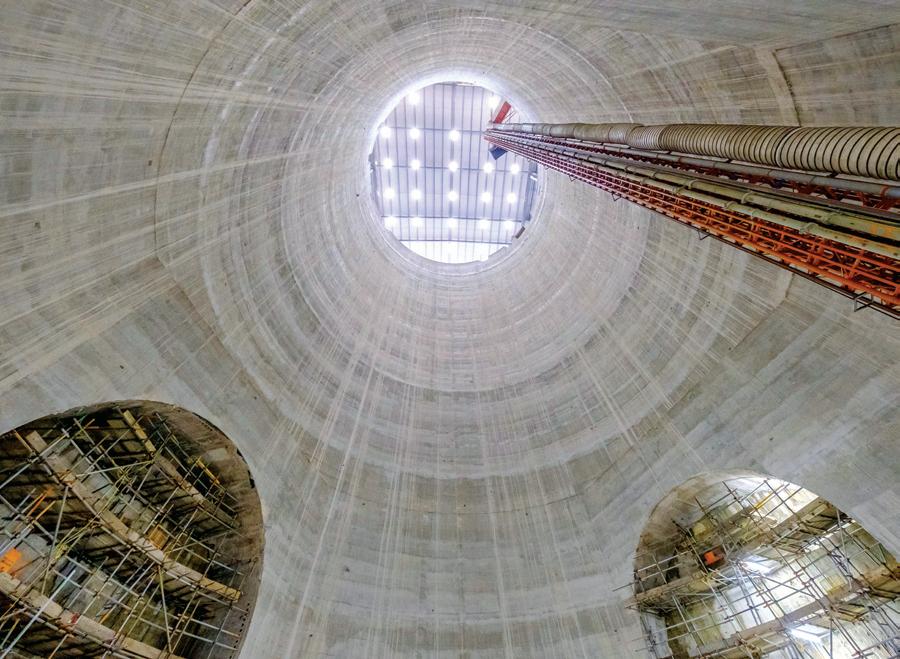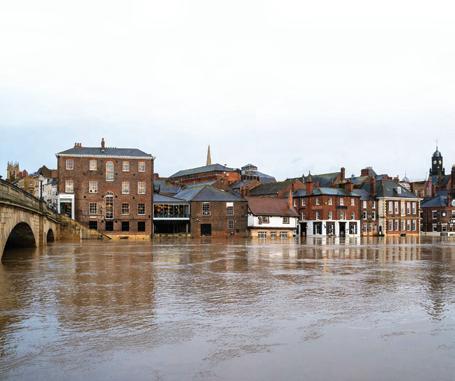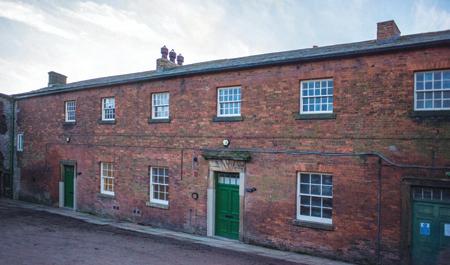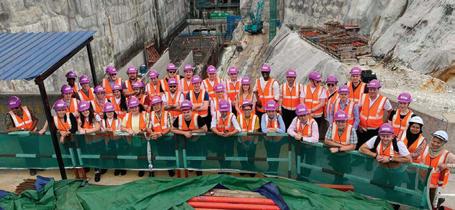
7 minute read
N ews in pictures
News
Thames super sewer hits halfway mark
Advertisement
Tunnelling on the Thames Tideway super sewer, which is being built to limit sewage pollution in the River Thames, has reached the halfway mark. Tunnel boring machines (TBMs) have now tunnelled 12.5km of the 25km total length of the structure, with the tunnel currently stretching from Fulham in the west to Blackfriars in the City of London. The tunnel has already passed under 13 bridges including Albert Bridge, Westminster Bridge and Waterloo Bridge.
Over 100 charging forecourts for electric vehicles to be built
A network of 100 electric forecourts are to be built across the UK to offer ultra-fast charging for electric vehicles as part of a £1bn programme. The first electric forecourt, developed by Gridserve and designed by Arup, is already under construction at Braintree in Essex. The solar-powered Braintree forecourt will be able to charge 24 electric vehicles at once with superchargers that can deliver up to 350kW of charging power, enabling people to charge vehicles within 20-30 minutes initially. Its construction has been supported by a £4.9m grant from Innovate UK.

Buckingham Palace refurb progresses with conservation work
Conservation experts are carefully removing 19th century Chinese wallpaper piece by piece from the walls of the Yellow Drawing Room in Buckingham Palace as part of conservation works there. The room has been emptied as part of a decant of the east wing of the palace, in preparation for reservicing work that includes replacing outdated pipes and wires. The early 19th century wallpaper came from King George IV’s Brighton Pavilion. It was discovered in storage by Queen Mary after the First World War and was rehung in the Yellow Drawing Room.

News story for CM? Email neil@atompublishing.co.uk
New wearable tech to prevent HAVS launched
A new form of wearable technology that its developer claims can prevent Hand Arm Vibration Syndrome (HAVS) has been launched. Developed by Coventry startup Feraru Dynamics, the HAV Sentry Glove monitors the vibrations created by heavy machinery when operating tools such as grinders, drills and concrete breakers.
The system alerts operatives when it reaches dangerous levels so that they know to take a break.


Amey uses smartphone sensors to detect sewer flooding
Amey has devised a new system using capacitive sensors similar to the ones found in smartphones to predict the likelihood of sewer flooding. Ofwat imposes fines on the water companies for exceeding the allowed number of sewer flooding incidents – each incident can cost a utility company over £40,000. Amey Consulting’s new technology, which is undergoing trials with the Water Research Council, uses capacitive sensors to detect the depth and speed of the flow in pipes. Analysis of the data picked up by the sensors is used to assess where blockages are and to predict the likelihood of flooding so that utility companies can take preventative action.
For the latest updates on how the Covid-19 virus is affecting construction, go to: www.construction managermagazine.com
Willmott Dixon volunteers to build lion home
A large Willmott Dixon team volunteered their own time to build a home at the Isle of Wight Zoo, Sandown, for two rescued lion brothers. Vigo and Kumba were saved from a Spanish circus where they spent most of their lives in a lorry trailer. Thanks to zoo operator The Wildheart Trust and Willmott Dixon, they now have a specially built home that includes a heated sleeping area and reinforced full-height windows.

Contractor uses 3D model to replace huge rollercoaster's tracks
Bolton-based Taziker Industrial has installed four new sections of steel track on Blackpool’s Big One rollercoaster.
The refurbishment work involved removing work sections of track in November last year, before the new sections were installed earlier this month. The firm used 3D models to manufacture the tracks at its fabrication facility in Manchester.
The rollercoaster tracks were completed ahead of time and transferred to be painted in the red colour of the Big One, which at 71m high was once the tallest rollercoaster in the world, before being lifted into place in February. Steel special, p32-41
£400m
A £400m fund was announced for mayoral authorities to build houses on brownfield sites
Budget 2020: Cautious welcome for construction investment

The construction industry has broadly welcomed Chancellor Rishi Sunak’s pledges to invest in infrastructure and housing, as well as measures to combat the impact of coronavirus
Figures from across the construction industry broadly welcomed chancellor Rishi Sunak’s first Budget on 11 March, which included pledges for billions of pounds worth of investment in infrastructure and housing
Sunak had just weeks to prepare for the Budget, following the resignation of his predecessor Sajid Javid, and was forced to announce a package of measures to tackle the rapid spread of coronavirus.
However, there were also a raft of other announcements affecting construction. That included a total of £175bn on additional infrastructure expenditure, as well as a doubling of flood defences expenditure spending of £5.2bn between 2021 and 2027.
The government has pledged a doubling of expenditure on flood defences
In housing, Sunak announced a £10.9bn increase in investment, including plans for a Building Safety Fund, worth £1bn (see box), as well as £1.1bn towards the Housing Infrastructure Fund to build around 70,000 houses and an additional £400m fund for mayoral authorities to build houses on brownfield sites.
And when it came to measures to protect businesses from coronavirus, he confirmed that workers’ statutory sick pay will start from the first day of illness to help slow the spread, as well as an offer to refund sick pay payments for firms with fewer than 250 staff during the outbreak.
Commenting on the announcement, Eddie Tuttle, director for policy, research and public affairs at the Chartered Institute of Building (CIOB), said: “We look forward to working with government on their plans for a new construction strategy and infrastructure strategy.
“We encourage government to ensure they provide a clear route map for how additional spending will be utilised and look at smarter ways the built environment can be used to tackle numerous socio-economic issues the country faces.”
Meanwhile, Mace chief executive Mark Reynolds welcomed the plans to combat coronavirus but urged companies to prepare. He said: “We welcome the chancellor’s plans to reduce the impact of the virus on small businesses, including a refund for statutory sick pay and business interruption loan scheme.
“However, in the construction and infrastructure sectors the costs of any significant disruption to project delivery is likely to far exceed the benefits of these measures…Businesses of all sizes need to carefully review their contingency plans to ensure that they are as prepared as possible.” ●
Government pledges £1bn for cladding refurb fund
New funding available for all types of dangerous cladding
Chancellor Rishi Sunak used his Budget speech to pledge £1bn to a new Building Safety Fund that aims to fund the cost of replacing all types of dangerous cladding on buildings above 18m in height.
The government has previously created funds of £400m to remove aluminium composite material (ACM) cladding of the type found on Grenfell Tower from social housing blocks in 2018, followed by £200m to speed up private housing remediation in 2019.
The new fund will apply to both public and private buildings and will be available for all forms of cladding deemed to be dangerous, rather than just ACM cladding.
The announcement came after the Association of Residential Managing Agents (ARMA) warned that up to 500,000 people in the UK could be living with cladding now considered to be unsafe, despite the fact that it would have passed building control at the time, including high pressure laminate (HPL) or ACM.
Commenting on the news, Eddie Tuttle, director for policy, research and affairs at the CIOB, said: “The failures of quality that resulted in the recent incidents at Grenfell highlighted the need for an urgent review of the way in which quality is managed within the UK construction industry. “We are glad the government is committed to remove not just ACM cladding but all unsafe cladding from buildings above 18m. We urge that government ensures that any new home is built to a high-quality standard and ensure that buildings are fit for use.”











